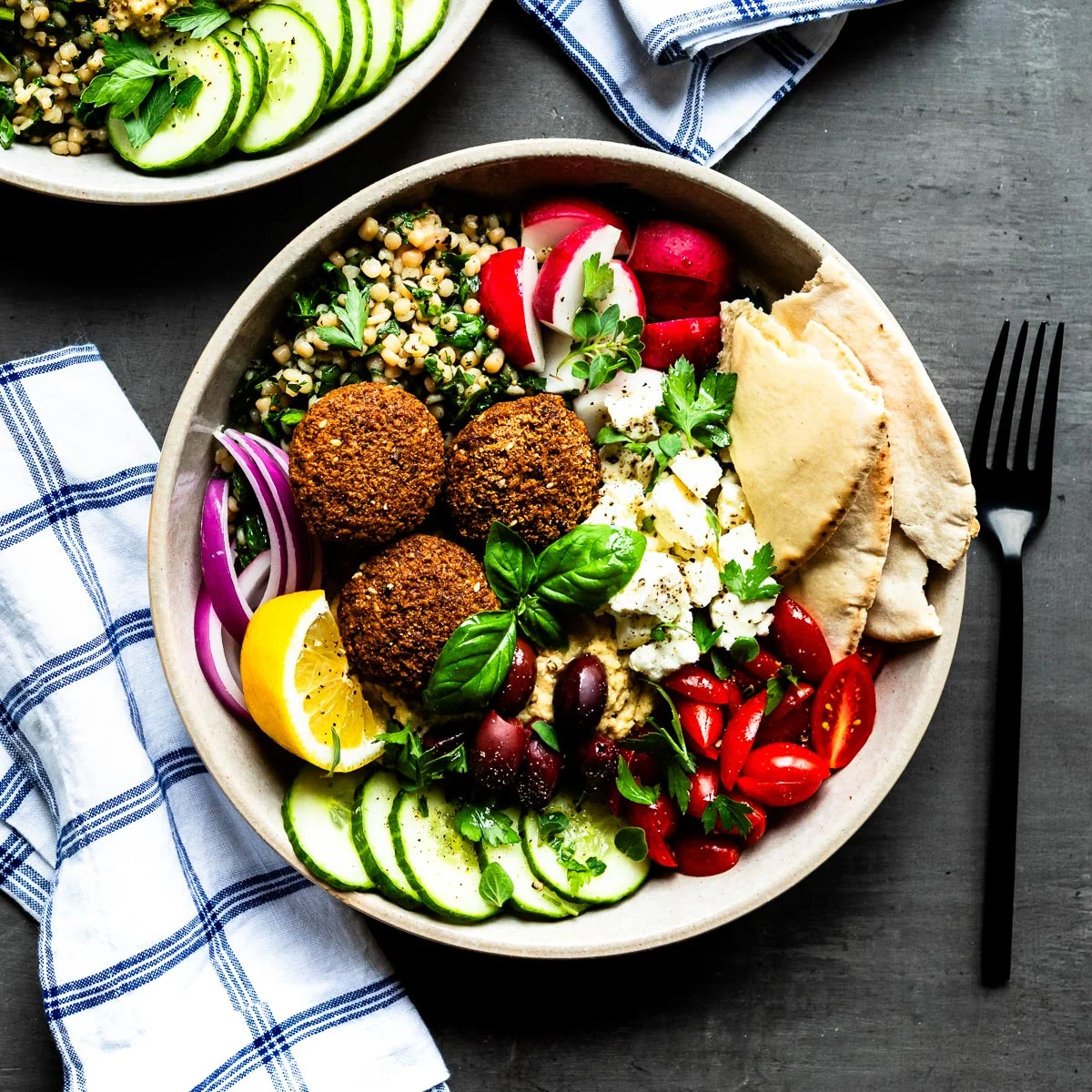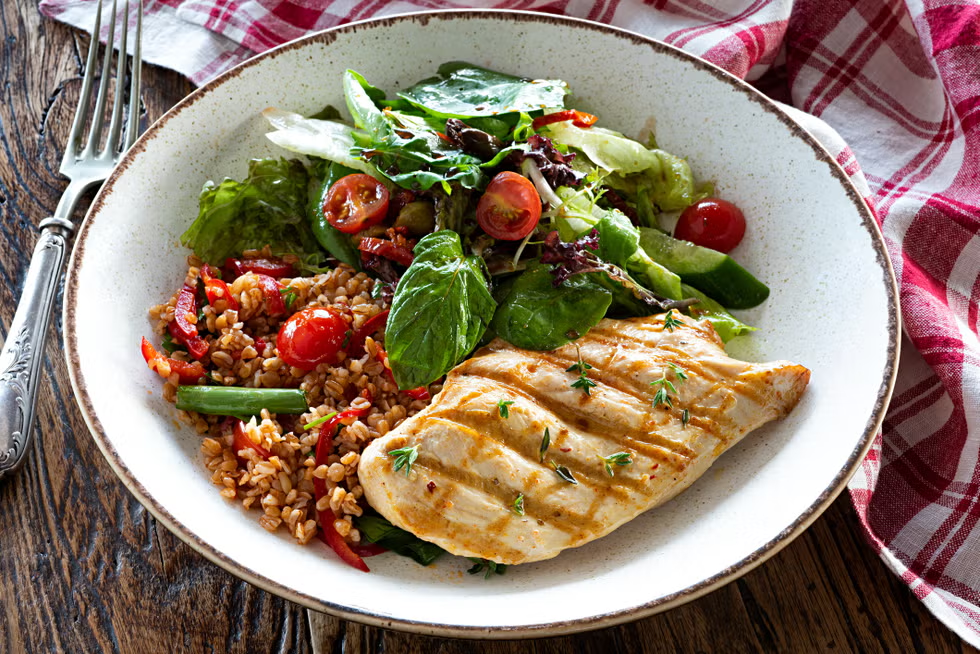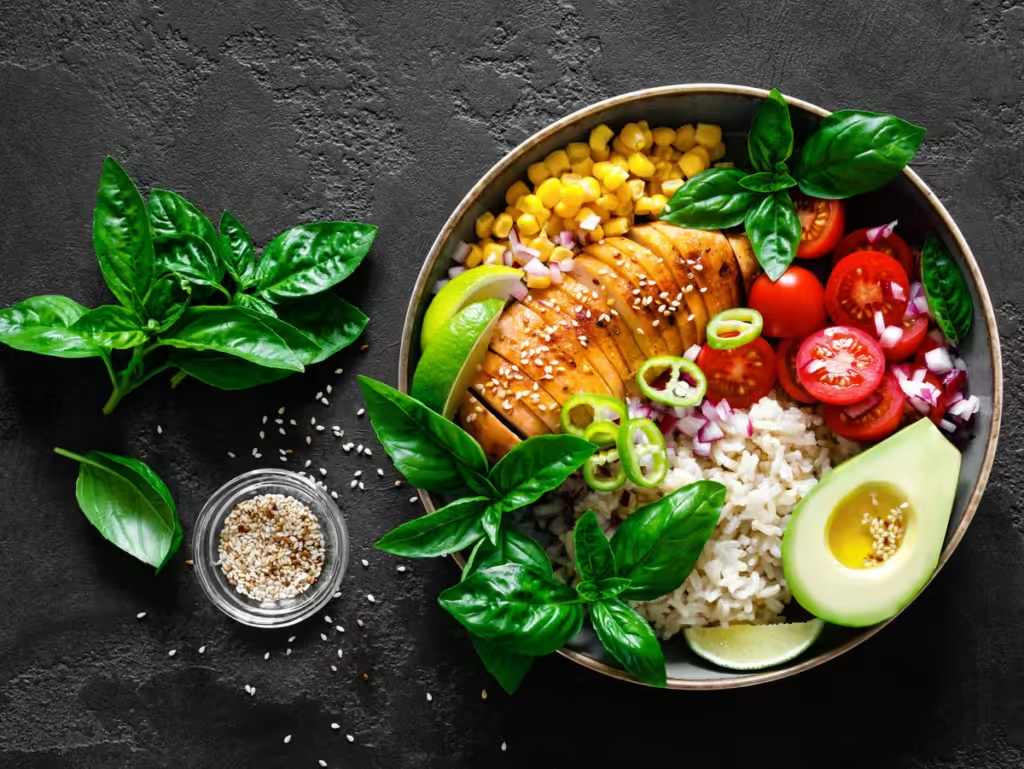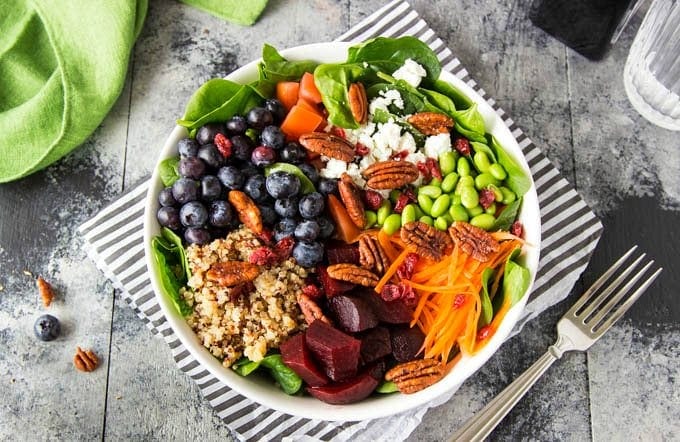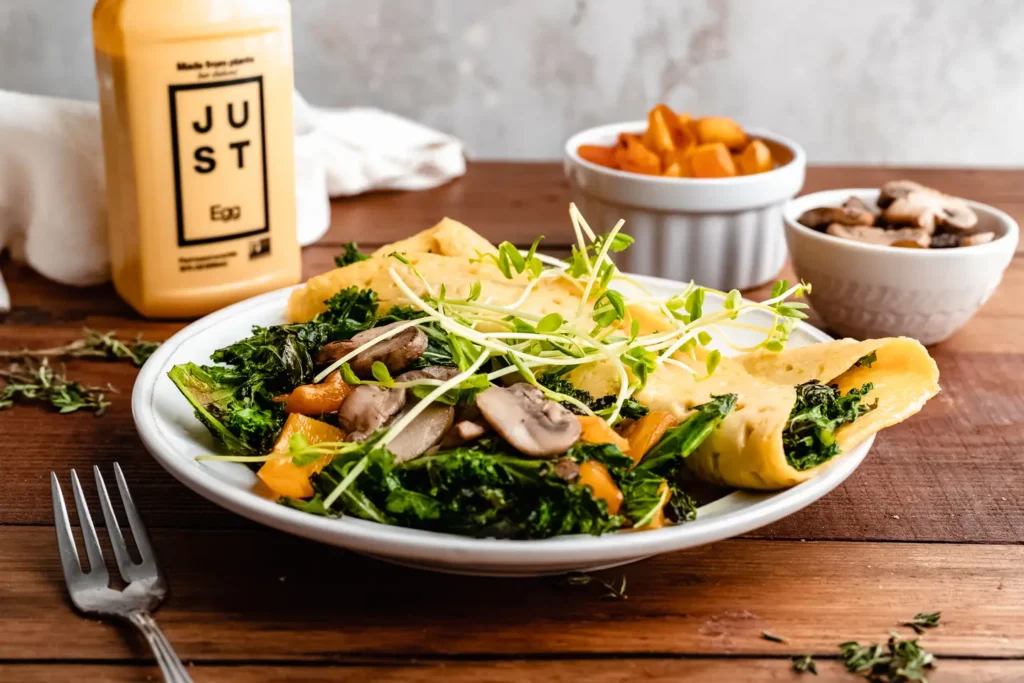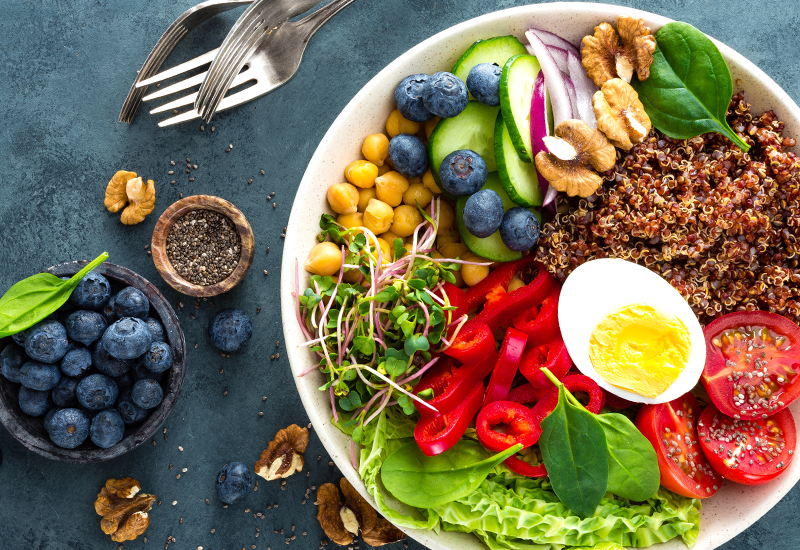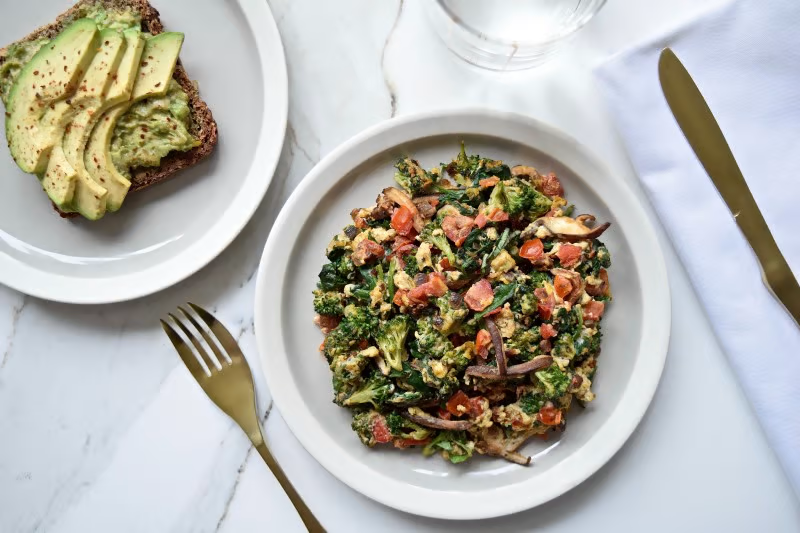Best Superfood Power Plate: A Great Health Guide Packed with Nutrients
Overview:
Best Superfood Power Plate is a nutrition model supported by science that promotes a plant-based diet. It was developed by the Physicians Committee for Responsible Medicine (PCRM) and emphasizes the importance of four food groups: grains, legumes, fruits, and vegetables. All the nutrients required for optimum health, energy, and illness prevention are included in this model. This plant-based strategy has been shown to strengthen immunity, enhance digestion, lower the risk of chronic diseases, and promote heart health. The Power Plate model offers the cornerstone for a nutritious and satisfying diet, regardless of your goals—improving athletic performance, maintaining a healthy weight, or just feeling more energized.
You can enjoy tasty meals while giving your body the best nutrition possible by choosing foods carefully and including a range of nutrient-dense options. Discover the benefits of a plant-based diet by getting started today. The idea of the most powerful superfood power plate, its health advantages, and a thorough analysis of nutrient-dense options within each category will all be covered in this article.
Recognizing the Power Plate Model
A plant-based, whole-food diet that avoids processed foods, animal products, and excess fats is advocated by the Power Plate model. It provides a thorough approach to balanced nutrition and is made to be easy to use and efficient. Each of the four main categories—fruits, vegetables, grains, and legumes—offers vital antioxidants, fiber, and vitamins and minerals.
People can maintain a healthy weight, enhance cardiovascular health, enhance digestion, and lower their risk of developing chronic illnesses like diabetes, cancer, and high blood pressure by adhering to this model.
The Power Plate’s Four Food Groups
1. Fruits: A Natural Nutrient Powerhouse
Because they contain vitamins, minerals, fiber, and antioxidants, fruits are a must in a Power Plate diet. Naturally low in calories, they are high in essential nutrients that promote general well-being.
Fruits High in Nutrients to Incorporate:
- Berries (strawberries, blueberries, raspberries, and blackberries): Rich in fiber, vitamin C, and antioxidants that boost cognitive and immune function.
- Bananas: A fantastic source of potassium, bananas aid in controlling blood pressure and muscle contraction.
- Apples: Rich in fiber and gut-healthy polyphenols.
- Oranges and Citrus Fruits: Vitamin C-rich oranges and citrus fruits improve skin health and immune system performance.
- Papayas and Mangoes: High in digestive enzymes, vitamin C, and beta-carotene.
- Avocados: Rich in potassium, fiber, and heart-healthy monounsaturated fats.
Fruits’ Health Benefits:
- Cut down on oxidative stress and inflammation.
- Encourage a balanced gut flora.
- help with hydration and digestion.
2. The Best Source of Vitamins and Minerals: Vegetables
In addition to providing vital nutrients, vegetables play a key role in preventing disease. They are rich in phytonutrients and potent antioxidants that improve cellular health and immunity.
Vegetables High in Nutrients to Incorporate:
- Leafy Greens (spinach, kale, Swiss chard, collard greens): Which include spinach, kale, Swiss chard, and collard greens.
- Cruciferous Vegetables (broccoli, Brussels sprouts, cabbage, cauliflower): Which has anti-cancer effects.
- Carrots and Sweet Potatoes: Which is abundant in sweet potatoes and carrots, helps with immunological and visual function.
- Bell peppers: Offer carotenoids and vitamin C for healthy skin and a strong immune system.
- Beets: Packed with nitrates that increase stamina and blood flow.
- Mushrooms: Which strengthen the immune system, and B vitamins are abundant in mushrooms.
Vegetables Health Benefits:
- Reduce cholesterol and encourage heart health.
- Improve digestion and detoxification.
- Encourage mental clarity and brain function.
- Grains as an Eco-Friendly Energy Source
3. The Greatest Whole Grains to Use:
Because they provide fiber, complex carbohydrates, and vital nutrients, whole grains are a crucial component of the Power Plate model. They maintain steady blood sugar levels while supplying long-lasting energy.
- Quinoa: All nine of the essential amino acids are present in this complete protein.
- Brown Rice: High in fiber and magnesium, supporting digestion and bone health.
- Oats: Beta-glucan, which is abundant in oats, lowers cholesterol.
- Barley: A grain high in fiber that promotes intestinal health.
- Millet and Buckwheat: Buckwheat and millet are naturally gluten-free grains that are rich in minerals and protein.
- Whole Wheat and Rye: Iron, fiber, and B vitamins are all found in whole wheat and rye.
Whole Grains’ Health Benefits:
- Lower bad cholesterol (LDL) to promote heart health.
- Prevent constipation and aid in digestion.
- Aid in blood sugar regulation and diabetes prevention.
4. Legumes: The Superfoods of Fiber and Protein
One of the main protein sources in the Power Plate diet is legumes. They are a great alternative to animal proteins because they are high in fiber, vitamins, and minerals.
The Best Legumes to Add:
- Lentils: Rich in iron, protein, and folate, lentils aid in the production of red blood cells.
- Chickpeas: Garbanzo beans, or chickpeas, are rich in fiber, protein, and important minerals.
- Black Beans and Kidney Beans: Plant-based protein, fiber, and antioxidants can be found in kidney and black beans.
- Peas (Green Peas, Split Peas): Protein, iron, and vitamin C are all found in peas (green and split).
- Soybeans (Edamame, Tofu, Tempeh): A complete protein and a great source of calcium and iron are soybeans (edamame, tofu, and tempeh).
Legumes Health Benefits:
- Lower your chance of developing heart disease.
- Encourage the development and repair of muscles.
- Encourage healthy digestion and gut health.
- Balanced Nutrition and Meal Planning
By using the Power Plate model, all macro and micronutrient requirements are satisfied. Here’s how to organize meals that are balanced:
Ideas for Breakfast:
- Oatmeal with Berries and Nuts: Berries and Nuts in Oatmeal: Offers fiber, antioxidants, and good fats.
- Smoothie with Spinach, Banana, Berries, and Plant-Based Milk: A nutrient-dense way to start the day is with a smoothie made with spinach, banana, berries, and plant-based milk.
- Whole-Grain Toast with Avocado and Chickpea Mash: Healthy fats and proteins abound in whole-grain toast with avocado and chickpea mash.
Lunch Suggestions:
- Quinoa Salad with Chickpeas, Kale, and Lemon Dressing: Iron, fiber, and protein are all abundant in this quinoa salad with chickpeas, kale, and lemon dressing.
- Vegetable Stir-Fry with Brown Rice and Tofu: Brown rice and tofu stir-fried with vegetables: Provides a variety of vital vitamins and minerals.
- Lentil Soup with Whole Grain Bread: Whole Grain Bread and Lentil Soup: Rich in protein, fiber, and antioxidants.
Ideas for Dinner:
- A tasty and nutrient-dense dish is stuffed bell peppers with brown rice and black beans.
- Beta-carotene, fiber, and plant-based protein are all found in sweet potato and lentil curry.
- Quinoa, hummus, and grilled vegetables make a nutritious, well-balanced meal.
Good Snacks:
- Nut butter with fresh fruit.
- Hummus with raw vegetables.
- Trail mix with nuts and dried fruits.
- Guacamole on whole grain crackers.
FAQs
Q-1. What is the food concept of Power Plate?
The four food groups fruits, vegetables, whole grains, and legumes—are the focus of the straightforward Power Plate diet plan. For optimum health, it encourages nutrient-dense, plant-based diets.
Q-2. What are the health benefits of following the Power Plate diet?
By offering fiber, vitamins, minerals, and antioxidants, it may aid in weight control, heart health, diabetes prevention, and general well-being.
Q-3. Is there enough protein in the Power Plate?
Yes, you can meet your daily protein needs without using animal products by eating vegetables, whole grains, legumes, and nuts.
Q-4. How does the Power Plate differ from other diet plans?
The Power Plate promotes a balanced consumption of complete, plant-based foods without calorie counting, portion control, or food elimination, in contrast to restrictive diets.
Q-5.How does the Power Plate differ from other diet plans?
The Power Plate promotes a balanced consumption of complete, plant-based foods without calorie counting, portion control, or food elimination, in contrast to restrictive diets.

